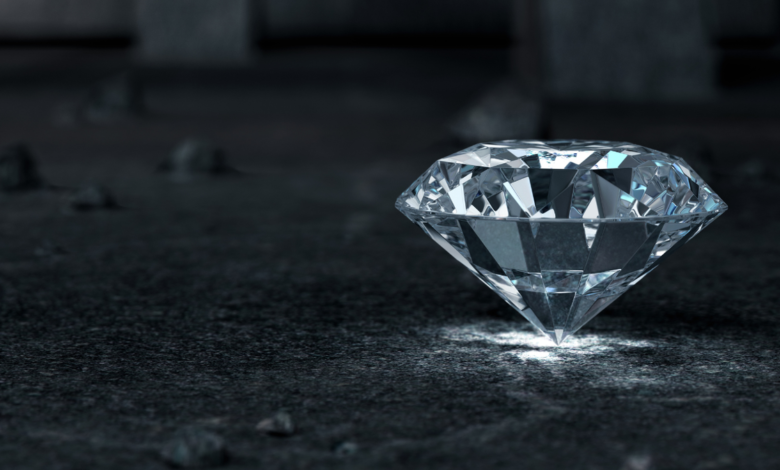Everything You Need to Know About Lab Grown Diamonds

As the world of diamonds has evolved, so too have the ways in which we obtain them. For centuries, natural diamonds have been the traditional way to express love and commitment, but now a new type of diamond is shaking up the industry: lab-grown diamonds. These lab-grown diamonds are not only more affordable and ethical, they also offer a variety of benefits that are changing the way people think about diamonds and what they represent. In this blog post, we’ll explore how lab-grown diamonds are changing the diamond industry and what this means for the future of diamonds.
What are lab grown diamonds?
Lab-grown diamonds, also known as synthetic diamonds, are created in a laboratory setting, rather than being mined from the earth. This process has become more popular in recent years due to the ability to create diamonds that are identical to naturally mined stones. Lab-grown diamonds have the same chemical and physical properties as those found in nature, but with the added benefit of being more affordable and sustainable.
Lab-grown diamonds are created using high-pressure and high-temperature technology, where a tiny diamond seed is placed in an environment containing carbon and subjected to intense pressure and heat. This process essentially replicates the conditions under which natural diamonds form deep below the surface of the Earth. The result is a diamond that is virtually indistinguishable from a naturally mined stone.
Lab diamonds have also become popular because of their conflict-free status. Natural diamonds are often associated with unethical mining practices, violence, and human rights abuses. By choosing lab-grown diamonds instead, consumers can ensure that their diamond was sourced ethically and sustainably.
Are they cheaper than natural diamonds?
Lab grown diamonds are an increasingly popular choice for consumers who want the look and feel of a real diamond without the hefty price tag. Lab-grown diamonds have the same physical and chemical properties as natural diamonds, but cost about 30-40% less on average. This is because the lab-grown diamonds are produced in a laboratory setting and not mined from the ground, which saves on production costs. Additionally, lab-grown diamonds are more accessible because they can be produced in larger quantities than naturally-occurring diamonds.
One of the advantages of buying lab-grown diamonds is that they can be made in larger sizes and shapes than natural diamonds, giving consumers more options when choosing the perfect stone. For example, a two-carat lab-grown diamond is much more affordable than a two-carat mined diamond, so consumers can get more for their money.
Finally, the lab-grown diamond industry is still new and growing, which means that consumers can take advantage of competitive prices and find bargains if they shop around. Lab-grown diamonds offer a great way to get the look of a real diamond at a fraction of the cost, making them an attractive option for those who want to buy an ethically-sourced diamond without breaking the bank.
Are they ethically sourced?
The ethical sourcing of diamonds is becoming a major concern for the diamond industry, and lab-grown diamonds are helping to tackle this issue. Lab-grown diamonds are created in a laboratory, meaning that they do not require any mining operations, which helps to reduce environmental impact. They also don’t require any unethical labor practices, since they are created by scientists in a lab.
Lab Created Diamond Manufacturer offer an ethical alternative to natural diamonds and are becoming increasingly popular as people become more aware of the issues surrounding the diamond industry. In addition to being ethically sourced, they also offer consumers more options when it comes to color, clarity, and size than what is traditionally available with natural diamonds.
Natural VS. Lab Grown
When it comes to diamonds, it’s important to be able to tell the difference between natural and lab-grown diamonds. While it can be difficult to tell the difference with the naked eye, there are a few key factors that you should look for.
First of all, natural diamonds typically have inclusions, or small imperfections that form during the diamond’s formation in the Earth’s mantle. Lab-grown diamonds, on the other hand, are created in a controlled environment and therefore have fewer inclusions than their natural counterparts.
Another way to tell the difference between natural and lab-grown diamonds is by examining the cut of the diamond. Natural diamonds are often cut using different techniques that maximize their sparkle and brilliance, while lab-grown diamonds are cut with precision and uniformity. This can make it easier to identify a lab-grown diamond as they will often appear more uniform and symmetrical in shape.
Lastly, you can use special machines to test if a diamond is natural or lab-grown. These machines use technology to measure a variety of factors such as fluorescence, spectral absorption, and even carbon isotope ratios to determine if a diamond is natural or lab-grown.
Overall, it’s important to understand the differences between natural and lab-grown diamonds so you can make an informed purchase. Knowing the signs of a CVD diamonds manufacturer can help you make sure you are getting what you pay for.





